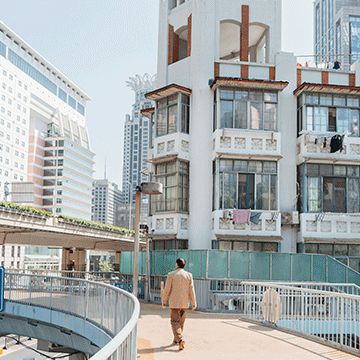Download Assets
description
Welcome to day 5 of the series!In this tutorial we’ll cover everything you need to know about Adjustment Layers. Learn how to non-destructively edit color, light, and tone using layers for brightness, contrast, levels, and more. Plus, use layer masks for localized edits, and customize your workspace for an efficient workflow.
Follow along with all 30 episodes as we explore the the magic of Photoshop together!
Watch Next
JOIN 30 DAYS OF PHOTOSHOP (FOR FREE!)
Ready to jump in? Sign up and we’ll email you a printable calendar and daily class schedule so you can get started right away!
Image Source
- Jhonny Santiz
Images sourced from Unsplash.
Share
AFTER
BEFORE
The power of Adjustment Layers
Adjustment Layers are among our top tools when it comes to working on Photoshop. They allow you to make powerful, non-destructive edits to the color and light in your images. This means you can adjust, delete, or change your edits at any point without altering the original photo, giving you complete flexibility and control.
Adjustment Panel Workflow
To start, optimize your workspace for efficiency.
1. First, open the Adjustments panel by navigating to Window > Adjustments.
2. Next, open the Properties panel by going to Window > Properties. This will allow you to quickly access and edit the settings for each adjustment.
3. Arrange these panels on the right side of your screen for easy access.
4. To create a new adjustment layer, simply click on one of the icons in the Adjustments panel, such as Brightness/Contrast. A new layer will appear in your Layers panel, ready to be edited.
Editing and Layer Masks
Once you have your adjustment layer, you can use the sliders in the Properties panel to make changes to your image. For a quick before-and-after view, you can use the visual reset button within the Properties panel or toggle the layer’s visibility on and off by clicking the eye icon in the Layers panel. A key feature of adjustment layers is the ability to use layer masks. A layer mask allows you to control the visibility of the adjustment on specific parts of your image. Remember, black is invisible and white is visible. You can use the brush tool, gradients, or selections to edit the mask and apply the adjustment to only the areas you want.
Working with Tonal Adjustments
Several adjustment layers, such as Levels and Curves, offer precise control over your image’s tonality. With Levels, you can control the black point, white point, and midtones with individual sliders. The Curves adjustment layer offers even more control, allowing you to add multiple points along a curve to edit a wider range of tones from shadows to highlights. Both also allow you to edit individual color channels (Red, Green, and Blue) for more advanced color toning. These tools are incredibly powerful and often used as the foundation for professional photo editing.
That’s a wrap on Adjustment Layers! On day 6 of our series, we’ll dive deeper into the world of Masking, a crucial skill that will unlock even more creative possibilities in Photoshop.












